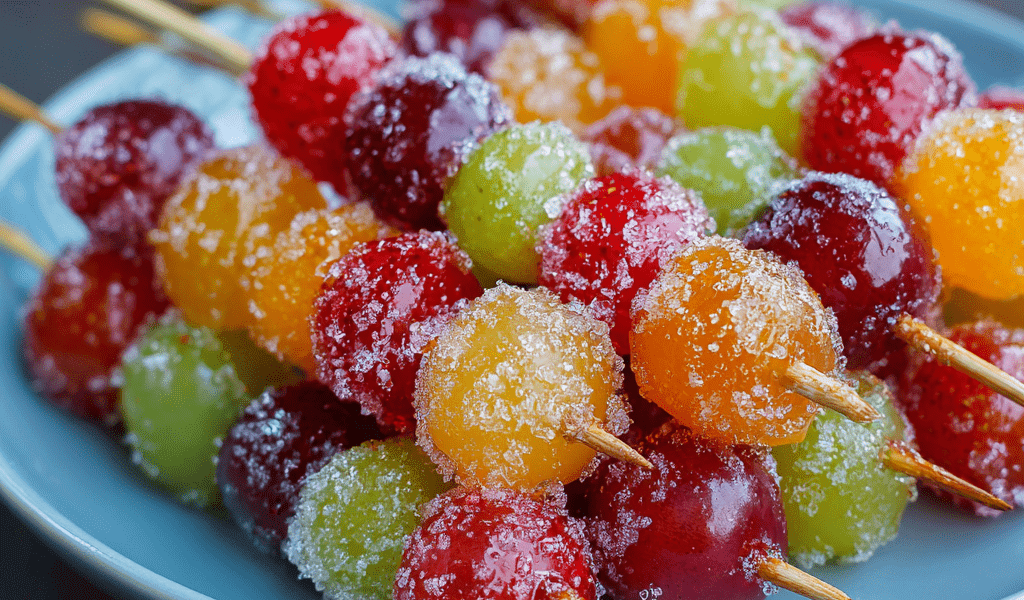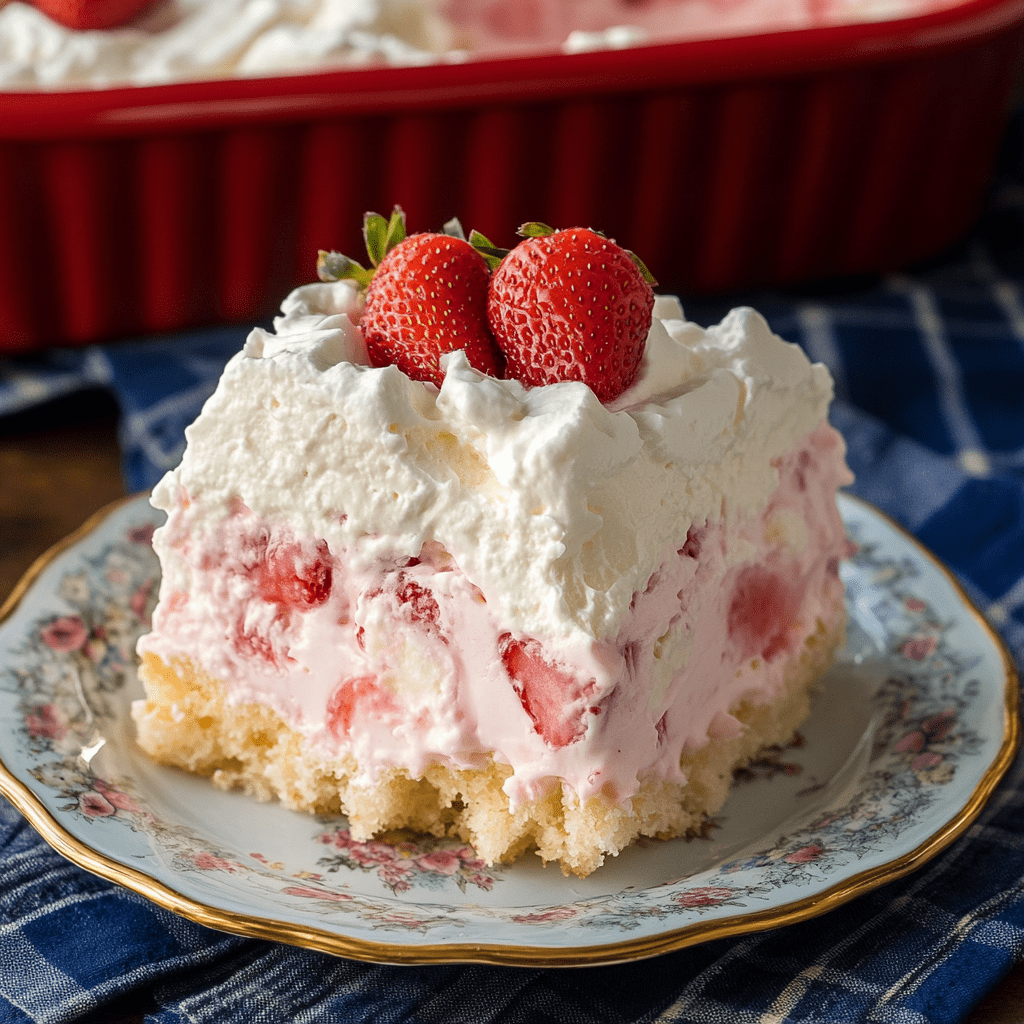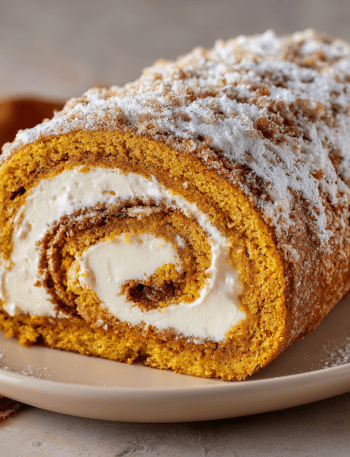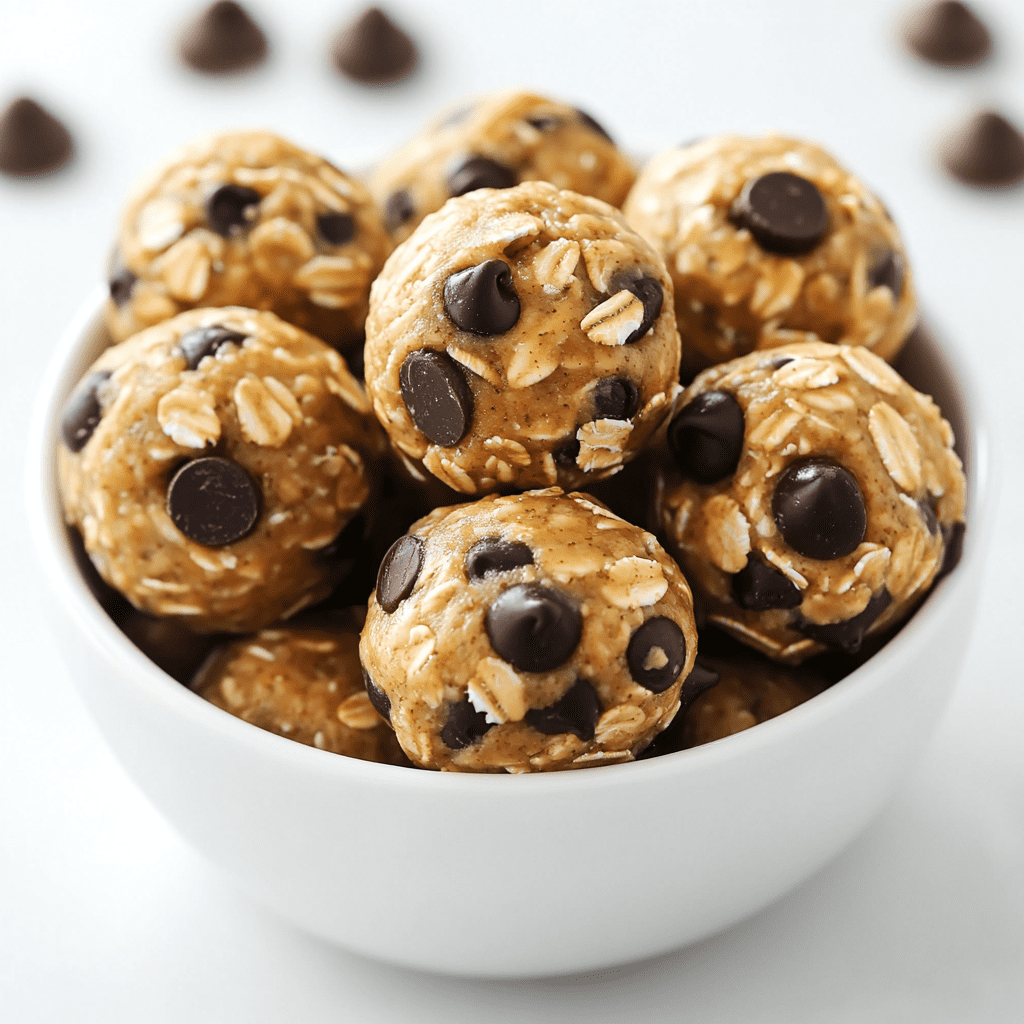Let’s Make Some Magic: Crispy, Juicy, Homemade Tanghulu!
Hey there, my fellow flavor adventurer! Have you ever scrolled through your phone and stumbled upon a video of glossy, ruby-red strawberries being dipped into a shimmering pot of liquid, only to emerge moments later encased in a dazzling, glass-like shell? That, my friend, is the pure magic of Tanghulu. And let me tell you, that first satisfying *CRACK* as you bite through that sweet, crunchy candy shell into a burst of juicy fruit is a sensory experience that’s straight-up euphoric.
As a chef who lives for those “wow” moments in the kitchen, I knew I had to master this iconic Chinese street snack. It’s a treat that’s as fun to make as it is to eat, and it’s guaranteed to be the star of any party, picnic, or just a Tuesday night when you need a little sparkle. This isn’t just candy; it’s an event. And the best part? With a little patience and my foolproof tips, you can absolutely create this stunning treat right in your own kitchen. So, tie on your apron, grab your favorite fruits, and let’s transform simple ingredients into something truly extraordinary together.

A Sweet Memory on a Stick
My first encounter with Tanghulu wasn’t in a fancy restaurant or a cookbook. It was on a bustling, vibrant night market street in a video I watched years ago. I was mesmerized. The vendor moved with a rhythmic grace, dipping skewer after skewer into a bubbling cauldron, the fruit emerging looking like something from a fairy tale. It reminded me so much of the candy apples my grandma and I would make every fall—that same anticipation of waiting for the hard crack, the same sticky-fingered joy.
But Tanghulu felt different. Lighter, brighter, and somehow more elegant. It was a celebration of the fruit itself, the candy shell acting as a delicate showcase rather than a heavy blanket. That memory of watching it being made, of seeing the sheer delight on people’s faces as they bit into it, stuck with me. It became my kitchen white whale for a while—a simple recipe with a tricky technique. After a few (okay, several) attempts that resulted in sticky puddles instead of glossy shells, I finally nailed it. And now, I’m so thrilled to pass that hard-won knowledge on to you, so your first try can be a resounding success!
Gathering Your Tanghulu Toolkit
One of the beautiful things about this recipe is its simplicity. You only need a handful of ingredients to create pure magic. The key is quality and preparation!
- ~60 pieces of Fresh Fruit: This is your canvas! Strawberries are the classic choice for their perfect balance of sweet and tart. Grapes (especially seedless) offer a wonderful pop. Blueberries are like little flavor bombs, and tangerine or clementine segments add a gorgeous citrusy zing. Chef’s Insight: Whatever you choose, make sure it’s fresh, firm, and completely dry. Any moisture is the enemy of a perfect candy shell!
- 4 cups White Granulated Sugar: This is the star of our candy coating. Don’t be tempted to substitute with brown sugar or honey here; we need the pure, neutral sweetness and chemical properties of white sugar to achieve that clear, glass-like shell. Substitution Tip: While I don’t recommend it for your first try, you can use organic cane sugar, just know the shell may have a very slight tan tint.
- 2 cups Water: Simple, clean water is our partner in crime here, helping to dissolve the sugar and create our syrup.
- Zest of 1 Lemon or Orange (optional but recommended!): This is my little “Tasty Chow” twist! A bit of citrus zest added at the very end brightens up the entire flavor profile, cutting through the pure sweetness and making each bite even more refreshing.
- 20 Skewers: Wooden or bamboo skewers are perfect. If you’re using wooden ones, it’s not a bad idea to give them a quick soak in water for 30 minutes beforehand to prevent them from scorching if they touch the hot pan.
Crafting Your Candy-Coated Masterpiece: A Step-by-Step Guide
Alright, friends, this is where the fun begins! Making the sugar syrup is a science, but don’t let that intimidate you. We’re going to walk through it together, one simple step at a time. Read through all the instructions once before you start, and you’ll be a Tanghulu pro in no time.
- Prep the Fruit Like a Pro: This is the most important step for success! Wash your fruit gently and then pat it thoroughly, completely, obsessively dry with paper towels. Any lingering water will cause the sugar syrup to seize up and not stick. Once they’re bone-dry, skewer 2-3 pieces of fruit per stick, leaving a good handle at the bottom for dipping. Chef’s Hack: Do this step first and let the fruit sit out on a tray lined with paper towels while you make the syrup, just to be doubly sure they’re dry.
- Create the Candy Syrup: In a medium, heavy-bottomed saucepan (a light-colored interior is best so you can see the color of the syrup changing), combine the sugar and water over medium-high heat. Stir gently just until the sugar dissolves. This is crucial: once the sugar has dissolved and the mixture starts to boil, stop stirring. I know it’s tempting, but stirring can cause the sugar to crystallize, and we want a smooth, glassy coating. Instead, you can gently swirl the pan occasionally if you see hotspots.
- The Patient Wait to Hard Crack: Let the syrup boil away. It will go from cloudy to clear and then slowly start to take on a very, very light golden hue. This process can take 15-20 minutes. You absolutely need a candy thermometer for this. We are waiting for it to hit 300°F (150°C), also known as the “hard crack” stage. At this temperature, a drop of syrup in cold water will form hard, brittle threads. Chef’s Commentary: This is the test of a true kitchen warrior—patience! Don’t turn up the heat to rush it; you risk burning the sugar.
- The Final Flair & The Dip: Once you hit 300°F, immediately remove the pan from the heat. If you’re using the citrus zest, stir it in now—it will sizzle and pop a little, releasing incredible aromas. Now, work quickly but carefully! Tilt the pan to create a deep pool of syrup. Take a fruit skewer and dip it in, rolling it around to coat evenly. Let the excess syrup drip back into the pan for a second. Chef’s Hack: Try to avoid getting syrup on the stick itself, as it can be messy to eat.
- The Grand Harden: Place the dipped skewer upright in a glass or lay it on a parchment-lined baking sheet. Do not use wax paper, as it can stick! Within just a minute or two, you will witness the magic—the glossy syrup will transform into a hard, transparent shell. It’s the coolest thing ever!
How to Serve Your Stunning Tanghulu
Presentation is part of the joy! These glistening skewers are a work of art, so let’s show them off. For a real “street food” vibe, you can stand them upright in a tall glass or vase filled with sugar or dry rice to hold them in place—it creates a beautiful, dramatic centerpiece. If you’re laying them flat, use a platter or a wooden board. They are best enjoyed the day they are made, as the fruit can start to weep and soften the shell over time. Serve them immediately after the shell hardens for that ultimate, jaw-dropping crunch. They’re perfect for a dessert platter, a fun activity at a kid’s party (adults love it too!), or as a unique, handmade gift for a foodie friend.
Get Creative! Flavor Twists & Dietary Swaps
Once you’ve mastered the classic, the world is your candied oyster! Here are a few fun ways to mix it up:
- The Tropical Escape: Use pineapple chunks, starfruit slices, or firm mango pieces. The tropical sweetness is a dream with the crisp candy shell.
- The Autumn Spice: Add a tiny pinch of Chinese five-spice powder or a drop of vanilla extract to the syrup right after you take it off the heat for a warm, cozy flavor.
- The “Almost Healthy” Bite: For a lower-sugar version, you can try making mini skewers with just one or two small fruits, so it’s more of a petite treat.
- The Gourmet Drizzle: After the shell has hardened, drizzle the skewers with a little melted dark chocolate or a sprinkle of flaky sea salt. Trust me on this.
- The Veggie Surprise: Yes, really! Small cherry tomatoes or tiny, sweet chilies are sometimes used in savory-sweet Tanghulu variations for the truly adventurous.
Emily’s Kitchen Confidential
Oh, the stories I could tell from my Tanghulu learning curve! My first batch was a complete disaster. I didn’t dry the strawberries well enough, and the syrup just slid right off, creating a sticky lake on my parchment paper. Batch two? I got impatient and pulled the syrup off the heat too early, resulting in a chewy, tooth-pulling coating instead of a satisfying snap. But batch three? Perfection. The sound of that first successful *crack* was more satisfying than hearing a timer go off. This recipe has taught me more about patience and precision than almost any other. It’s a reminder that sometimes the simplest things require the most care. Don’t be discouraged if your first try isn’t perfect—every sticky failure is a step closer to candy-coated glory!
Your Tanghulu Questions, Answered!
Let’s tackle some common hiccups before they happen, so you can feel confident going in.
- Q: My sugar syrup crystallized and got grainy. What did I do wrong?
A: This is the most common issue! It’s almost always caused by stirring the syrup after it has started to boil, or by sugar crystals sticking to the side of the pan. To prevent this, after the initial stir to dissolve the sugar, don’t stir again. You can also use a wet pastry brush to wash down any sugar crystals on the sides of the pan during the first few minutes of boiling.
- Q: The candy coating is chewy and not hard. Why?
A: This means your syrup didn’t reach the full 300°F hard crack stage. The sugar needs to lose enough water to become brittle. A reliable candy thermometer is your best friend here! If it’s humid outside, this can also affect the final texture, making it a bit stickier.
- Q: Can I make Tanghulu with frozen fruit?
A: I do not recommend it. Frozen fruit releases too much water as it thaws, which will prevent the candy shell from adhering properly and make it very soggy, very fast. Always use fresh, firm, room-temperature fruit.
- Q: How do I store leftover Tanghulu?
A: They are truly best eaten within a few hours. If you must store them, place them in a single layer on parchment paper in a cool, dry place (not the fridge, as the humidity will melt the shell). The shell will likely become sticky and soft over time, but they’ll still taste delicious!
A Note on Nutrition & Indulgence
Let’s be real, friends—Tanghulu is a treat, a celebration, a special-occasion joy. It’s not an everyday health food, and that’s perfectly okay! Life is all about balance. The beauty of making it at home is that you control the ingredients. You’re using real fruit and a simple sugar syrup, with no artificial colors or preservatives. Each skewer is a moment of pure, unapologetic delight. The fruit provides vitamins and fiber, while the sugar coating provides a burst of energy and happiness. So, enjoy it mindfully, savor every crunchy, juicy bite, and share the sweetness with someone you love. That’s what good food is all about.
Your Sweet Adventure Awaits
And there you have it! You’re now armed with all the knowledge, tips, and chef-ly confidence you need to create your own breathtaking Tanghulu. This recipe is more than just a list of steps; it’s an invitation to play, to experiment, and to create a little bit of edible magic in your kitchen. I can’t wait for you to experience the thrill of that first perfect dip, that first satisfying crack, and the smiles it will bring. So, what are you waiting for? Your fruity, crunchy, irresistible adventure is ready to begin.
— Emily 🍓



